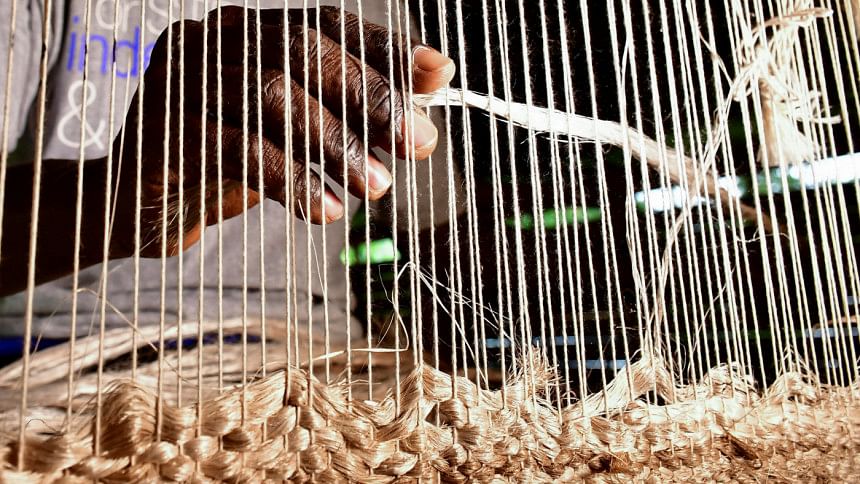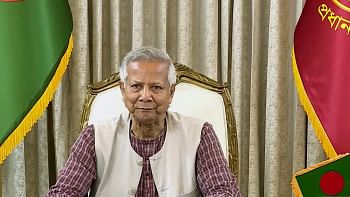Banana fibre pads could vastly improve coastal women's reproductive health

Bangladesh recently saw a momentous achievement: the making of Kolaboti saree from banana plant fibres. Radhavati Devi, a weaver from Moulvibazar, came up with the idea of making a saree out of the discarded portions of banana plants. There are a number of banana gardens in Bandarban, and the Bandarban district administration has taken the initiative to produce yarn from banana fibre. Banana yarn has also been used to make curtains, mats, bags, pen holders, and other handicrafts. Given the fabric's quality, one could expect that it could also play a vital role in the menstrual hygiene management of women in the country's coastal region.
In rural Bangladesh, menstrual hygiene management is still one of the most tabooed matters. According to a World Bank report from 2018, 77 percent of Bangladeshi women are unaware of proper menstrual hygiene products, making them susceptible to a variety of health issues. The coastal region is home to 35 million people, or 29 percent of the total population, half of whom are women. A recent research by the Center for Participatory Research and Development (CPRD) revealed that 90 percent of women in the coastal districts of Bagerhat and Satkhira are adversely affected by climate change in terms of their lives and means of subsistence, particularly due to increased salinity intrusion due to sea-level rise. From Shyamnagar upazila in Satkhira and Mongla upazila in Bagerhat, 17 cases involving women aged between 35 and 60 years were chosen for the study. Nearly 64 percent of the respondents in Mongla and 54 percent in Shyamnagar were found to have issues with their reproductive health. Most of them were involved in shrimp cultivation; they worked in the brackish water in shrimp enclosures from dawn to dusk.
According to a 2018 study by the Bangladesh Bureau of Statistics (BBS), 29 percent of menstruating women in Bangladesh use sanitary napkins. High tariff on the raw materials of sanitary napkins makes them unaffordable. The socioeconomic condition of the two areas mentioned above is poor. One pack of sanitary pads in the local market costs between Tk 100 and Tk 300, which most low-income and socially underprivileged women cannot afford. So, despite the risks, they continue to use old cloth for napkins, which is unhygienic. A campaign by Bangabandhu Sheikh Mujib Medical University (BSMMU) Hospital in 2020 revealed that about half of the women in the country's coastal areas were suffering from pre-cervical cancer symptoms.
In this situation, banana fibre can be a catalyst for change for Bangladeshi women and girls if it is used to make affordable, environmentally friendly sanitary pads. A report on eco-friendly and biodegradable sanitary pads reflected that it could take up to 700 years for the plastic materials used to make sanitary napkins to decompose. Because these disposable menstrual hygiene items generate more than 200,000 tonnes of non-biodegradable waste worldwide each year, they pose a grave risk to the environment. Furthermore, in Bangladesh, the production cost of each sanitary napkin is about Tk 12, whereas a napkin made from banana plant fibre would cost around Tk 3.5 only. The latter also absorbs water more effectively than cotton because of its unique composition. It is fully biodegradable, environmentally friendly, and has no history of aggravating skin issues or rashes.
It takes 10,000 litres of water to produce one kg of cotton. The water footprint of banana fibre is about 5,000-6,000 litres including irrigation, processing and other phases of production. Surprisingly, banana fibre is more absorbent and softer than any other material used for making sanitary pads.
With its eco-friendly and biodegradable, comfortable, and economical attributes, banana fibre may thus be regarded to be an appropriate fibre for the future. To make access to sanitary pads feasible for women in the coastal region, sanitary pad manufacturers can plan to make use of this fibre. Doing so will also promote the Sustainable Development Goal 12 – Responsible Consumption and Production. The day is not far off when the women of Bangladesh's coastal belt will be able to utilise their full potential by ensuring their own reproductive health.
Monira Sharmin is a research student under the Postgraduate Programme in Disaster Management (PPDM) at Brac University. She can be reached at [email protected]


 For all latest news, follow The Daily Star's Google News channel.
For all latest news, follow The Daily Star's Google News channel. 











Comments